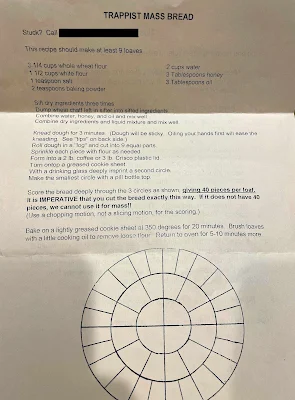 |
| Cartoon from Catholic newspaper ca. 1965. Things didn’t quite turn out this way. |
As I noted in an article published in October (“ The ‘Unique Expression of the Roman Rite’ in the Wild: New Zealand Priest Ad-libbing Eucharistic Prayer”), the primordial defect of the Novus Ordo is its huge range of possible realizations and adaptations, a dizzying number of them lacking in all good sense, good taste, connection with tradition, etc., and yet well within the bounds of what is legally permissible, not to say universally tolerated. In other words, it is a template for community prayer-action, not a liturgical rite as such, which is always characterized by unspontaneous and determinate givenness.
The “Big Bang” moment for the deritualization of rite was the very act of calling a global liturgical reform where everything was going to be evaluated through the filters of modern liturgical scholars. After that point, it hardly mattered what was said or done; the cord with tradition as normative, venerable, and essentially right had been severed, and Humpty-Dumpty’s situation looked quite favorable in comparison. “All the pope’s horses (i.e., curial officials) and all the pope’s men (i.e., local bishops) couldn’t put ritual back together again.” This helps explain why it seems dramatically easier to mount a full-scale solemn Tridentine liturgy than to reform the reform: the one thing is already a rite, the other is a workshop in search of an identity.
The “Big Bang” moment for the deritualization of rite was the very act of calling a global liturgical reform where everything was going to be evaluated through the filters of modern liturgical scholars. After that point, it hardly mattered what was said or done; the cord with tradition as normative, venerable, and essentially right had been severed, and Humpty-Dumpty’s situation looked quite favorable in comparison. “All the pope’s horses (i.e., curial officials) and all the pope’s men (i.e., local bishops) couldn’t put ritual back together again.” This helps explain why it seems dramatically easier to mount a full-scale solemn Tridentine liturgy than to reform the reform: the one thing is already a rite, the other is a workshop in search of an identity.
I was thinking about all this recently when a reader sent me a recipe that was used in the ’90s at his wife’s childhood parish for “baking the Mass bread.” One glance at this recipe makes it apparent that the parish in question did not, in fact, offer Mass for years due to invalid matter. [UPDATE: See the comments section for some clarifications on this point. To be more precise, the matter here is of doubtful validity and is classified as a grave abuse by the Church.] The reader’s wife was, needless to say, very upset to find out, years after the fact, that her “First Communion” wasn’t actually her first, because there might have been no Communion there.
Fast forward to the present. Good news: today, that same parish hosts two TLMs per week. The days of honeycakes are long gone, and the Roman Rite is back in place. Thanks be to God!
Visit Dr. Kwasniewski’s Substack “Tradition & Sanity”; personal site; composer site; publishing house Os Justi Press and YouTube, SoundCloud, and Spotify pages.
Fast forward to the present. Good news: today, that same parish hosts two TLMs per week. The days of honeycakes are long gone, and the Roman Rite is back in place. Thanks be to God!
Visit Dr. Kwasniewski’s Substack “Tradition & Sanity”; personal site; composer site; publishing house Os Justi Press and YouTube, SoundCloud, and Spotify pages.

